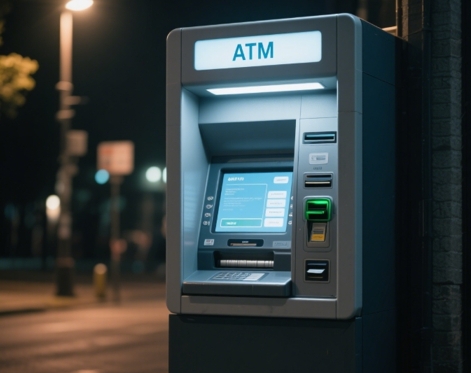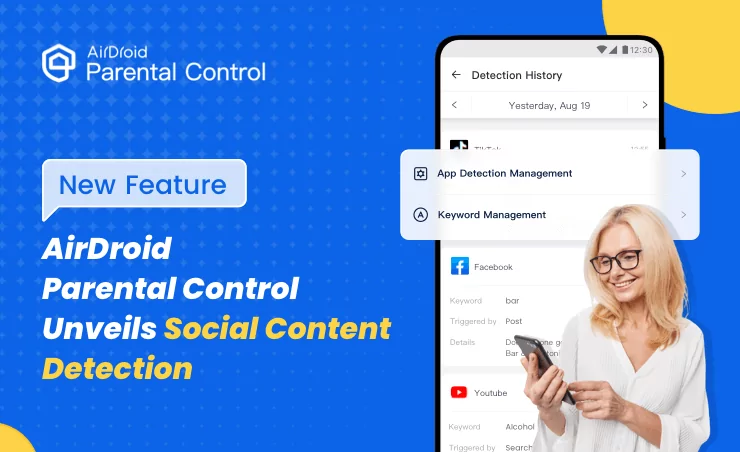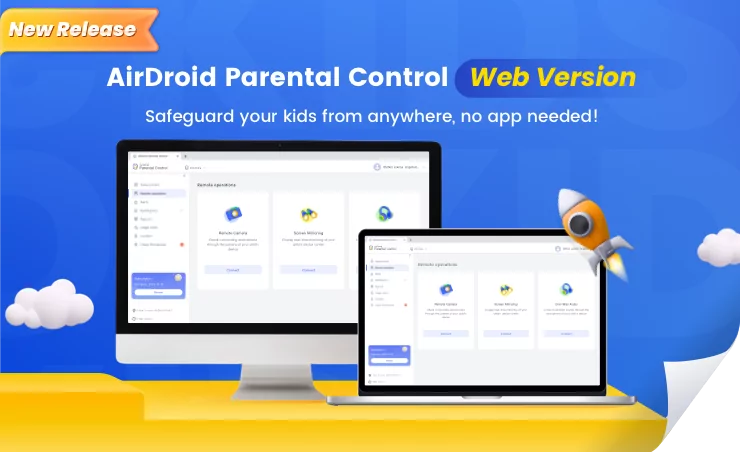Navigating Mobile Device Management (MDM) for Financial
1Introduction: The Imperative of MDM in Finance
Financial institutions today face immense pressure. Managing data security breaches, navigating complex regulatory compliance, and effectively supporting a mobile workforce accessing sensitive information are critical concerns. These challenges are magnified by the very nature of finance, an industry built on trust and operating with highly sensitive data under strict scrutiny. This is precisely why mobile device management (MDM) isn't just essential—it's foundational.
This article will show you how a specialized finance MDM solution directly tackles these challenges. You'll learn how MDM in finance mitigates risks, ensures compliance, drives efficiency, and securely empowers your mobile workforce, ultimately safeguarding your institution's reputation and bottom line.

2Why Financial Institutions Need Specialized MDM: Addressing Core Pain Points
For financial services MDM, merely "managing" devices isn't enough. It's about directly addressing the industry's unique pain points, ensuring both ironclad security and seamless operations.
Fortifying Data Security: Safeguarding Core Financial Assets
The bedrock of MDM for financial institutions is robust data security. Protecting sensitive financial information is non-negotiable:
1. Device Encryption & Data Loss Prevention (DLP): MDM enforces full device encryption and provides crucial features like remote wipe and remote lock, allowing IT to instantly secure or erase a compromised device. Robust DLP policies prevent sensitive information from leaving authorized channels.
2. Secure Application Sandboxing & Data Segmentation: MDM creates a secure sandbox for applications on company-owned devices, ensuring that corporate financial data is isolated from other apps. This prevents sensitive information from being accessed or shared inappropriately.
3. Advanced Authentication & Access Control: MDM enforces strong password policies and multi-factor authentication (MFA). It also allows for dynamic access control, adjusting permissions based on user role or device compliance.
Ensuring Strict Compliance: Navigating Financial Regulatory Pressure
Compliance is a constant in finance, and MDM for financial plays a pivotal role in meeting stringent demands:
1. Meeting Key Industry Regulations: MDM helps financial institutions adhere to mandates like GDPR, GLBA, PCI DSS, Basel III, and MiFID II regarding data protection, access control, and auditability.
2. Audit Trails & Reporting: A robust finance MDM system logs all device operations and security events, providing detailed audit trails for compliance reporting and simplifying complex audits.
3. Supporting KYC & AML Processes: For mobile applications involved in Know Your Customer (KYC) or Anti-Money Laundering (AML) operations, MDM ensures these processes are conducted on secure, compliant devices.
Mitigating Operational & Reputational Risks
Mobile devices introduce new risk vectors. A specialized MDM in finance is a critical risk mitigation tool:
1. Real-time Device Monitoring & Alerts: MDM continuously monitors device health and security policy adherence, instantly alerting IT to anomalies (e.g., jailbreaking/rooting, unauthorized apps).
2. Vulnerability Management & Patch Deployment: MDM ensures devices receive timely OTA (Over-The-Air) updates for system software and applications, patching vulnerabilities to reduce attack surfaces.
3. Remote Troubleshooting & Support: MDM enables IT teams to perform remote diagnostics and remote control for troubleshooting, minimizing downtime and reducing on-site support costs for financial professionals.
3Beyond Security: MDM's Strategic Value in Finance
Beyond security, MDM for financial drives efficiency and empowers the modern financial workforce.
Empowering the Mobile Financial Workforce: Boosting Efficiency & Productivity
Mobile device management in finance intelligently enables productivity:
1. Streamlined App Distribution & Management: MDM centrally distributes business-critical applications (e.g., CRM, trading platforms) to devices, automating installations, updates, and uninstalls.
2. Customized User Experience: Through Kiosk Mode or work profiles, devices can be configured for specific business uses, minimizing distractions for financial advisors and agents.
3. Secure Mobile Work & Remote Collaboration: MDM provides secure VPN connections and encrypted access to corporate resources, ensuring financial professionals can securely collaborate from any location.
Seamless Deployment & IT Ecosystem Integration
Effective MDM integrates smoothly into existing IT infrastructure:
1. Large-Scale Device Deployment: MDM solutions offer zero-touch enrollment and automated provisioning, enabling rapid deployment of thousands of devices.
2. Integration with Existing IT Infrastructure: A robust finance MDM integrates with core IT systems like Active Directory, LDAP, CRM platforms, and SIEM tools for consistent policy enforcement and centralized logging.
3. Support for Multi-Platform Devices: A versatile MDM platform supports iOS, Android, and Windows devices, providing unified management across the entire mobile fleet.
Analyzing Cost-Benefit & ROI: Measuring the Economic Benefits of MDM
Investing in MDM for financial services is a strategic move with quantifiable returns:
1. Reduced Operational Costs: MDM automates device setup and support, lowering IT workload and operational expenses.
2. Enhanced Business Continuity: Rapid incident response and proactive management prevent costly downtime.
3. Avoiding Compliance Fines & Reputational Damage: MDM dramatically reduces the risk of massive penalties and preserves client trust, providing immense value.
4AirDroid Business: A Powerful MDM Solution Meeting Financial Industry Needs
When selecting an MDM solution for the financial sector, AirDroid Business offers robust features designed for security, compliance, and efficiency.
How AirDroid Business Supports Financial Industry Needs: Key Features
Ironclad Device Security:
1. Remote Lock & Wipe: Instantly secure or erase sensitive data on lost/stolen devices, critical for DLP in finance.
2. Security Policy Enforcement: Centrally enforce complex passwords, disable USB debugging, restrict Wi-Fi, and manage app permissions for continuous compliance.
3. Kiosk Mode: Lock devices into specific financial apps, preventing unauthorized use (e.g., for customer-facing self-service kiosks).
Efficient Remote Access & Support:
1. Remote Control & Diagnostics: IT can remotely control devices for troubleshooting, minimizing downtime for mobile financial staff.
2. Remote File Transfer & Sync: Securely distribute business documents and updates to all devices instantly.
Streamlined Application Management & Distribution:
1. App Whitelisting/Blacklisting: Control which applications can run, ensuring only approved financial apps are used.
2. Silent Installation & Updates: Deploy and update custom banking apps or CRM tools remotely and silently, without interrupting work.
Proactive Device Monitoring & Alerts: Gain real-time insights into device status and security incidents. Set custom alerts for anomalies, enhancing risk mitigation.
Geofencing & Location Tracking: Set geofencing boundaries for mobile teams, triggering alerts if devices leave designated areas, enhancing security and compliance.
5AirDroid Business in Action: Real-World Financial Use Cases
Seeing MDM in finance in practice highlights its benefits. Here are detailed examples of AirDroid Business empowering financial institutions:
Case Study 1: Empowering a Mobile Wealth Management Team
A large wealth management firm with hundreds of financial advisors visiting clients off-site. They used Samsung Galaxy Tab S9 Android tablets with pre-installed CRM, investment portfolio viewers, and e-signature apps.
Scenario: Advisors meet clients for investment presentations and secure document processing.
AirDroid Business's Role:
1. Kiosk Mode: Tablets were locked to essential business apps only.
2. Remote App Updates: Ensured CRM and portfolio data were always current for advisors.
3. Remote Device Lock & Wipe: Enabled instant data protection if a tablet was lost or stolen.
4. Geofencing: Triggered alerts if tablets left approved business zones.
Outcome: Client data security significantly improved (ensuring GDPR compliance). Advisor efficiency surged by 20%, enhancing client service and reducing IT support needs.
Case Study 2: Optimizing Bank ATM/Self-Service Kiosk Maintenance

A major commercial bank managing thousands of ATMs and self-service kiosks nationwide, relying on field technicians. They used rugged Android tablets (e.g., Zebra ET51) with diagnostic tools and maintenance manuals.
Scenario: Technicians used tablets at ATM sites for diagnostics, troubleshooting, and software updates.
AirDroid Business's Role:
1. Remote Control & File Transfer: IT could remotely assist with diagnostics and push new firmware.
2. Silent App Installation & Updates: Ensured all diagnostic tools were always up-to-date.
3. Device Location Tracking: Optimized technician dispatch and improved response times.
4. Security Policies: Restricted internet access to approved domains.
Outcome: ATM issue resolution efficiency increased by 30%, reducing downtime. The bank also saved on travel costs for IT support, enhancing overall operational security.
Conclusion:Financial Institutions Embracing the Future of Mobile Security
In an era where mobility defines productivity and security defines trust, MDM for financial institutions is a strategic imperative. From safeguarding hyper-sensitive data and ensuring stringent regulatory compliance to empowering a dynamic mobile workforce, a robust finance MDM solution is foundational. AirDroid Business provides the granular control, security features, and remote management capabilities needed to navigate the complexities of the mobile landscape with confidence. Investing in a specialized MDM solution isn't just about protecting against threats; it's about enabling growth, fostering innovation, and cementing client trust in the digital future of finance.












Leave a Reply.